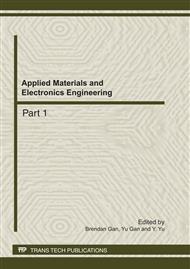p.353
p.358
p.362
p.366
p.370
p.374
p.381
p.385
p.389
Study on Impact Compaction of Aeolian Sand Subgrade and its Effect Evaluation
Abstract:
In order to solve the problem of aeolian sand subgrade compaction, we studied the technology of impact compaction, applied it to the engineering practice and analyzed its effect with Rayleigh wave. The technology of impact compaction can combine the compaction of potential energy and kinetic energy and make it easier for the materials to reach their elastic stage. With the combined function of "knead-roll-impact", the impact compaction road roller can compact the soil body and offer 6~10 times impact force and 3~4 times the depth of influence more than the vibratory roller. The impact compaction methods of aeolian sand subgrade were put forward. The comparative field compaction tests between impact and vibratory compaction are carried through, which are detected by Rayleigh wave. The results show that the impact compaction can make the density of the aeolian sand subgrade 2~5% higher than the vibratory compaction, and reach the influence depth of 7 metres. To sum up, the impact compaction can clearly increases the strength and stiffness of aeolian sand subgrade with a dynamic elastic modulus of 202.63MPa.
Info:
Periodical:
Pages:
370-373
Citation:
Online since:
October 2011
Authors:
Price:
Сopyright:
© 2012 Trans Tech Publications Ltd. All Rights Reserved
Share:
Citation:


